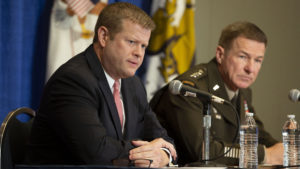
The Army expects to release a list of characteristics it wants in the restarted Optionally Manned Fighting Vehicle (OMFV) as a top official outlined the new development strategy for replacement to the Bradley fighting vehicle. “We are changing our process and you’re going to see very shortly a list of characteristics coming out – so we’re actually moving away from the word requirements because it means so much to those in the business that it actually constrains innovation, so we…

 By
By 











